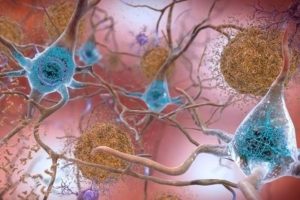by Kevin O’Connor
Termites are usually the biggest pest issue a household will have to deal with. They can take Pest Control Phoenix measures to exterminate the bugs but they might not be found until a lot of damage is done to the wood in a home. Termite damage can destroy furniture and weaken a house’s structure so it’s important to catch the issue early. However, it’s not just households that are vulnerable to termites, many trees can be destroyed by them too – especially if a foreign bug attacks a native tree. California is a long way from Florida, but it was a study in Florida that gave me some insights about the destructive reach of termites on California trees.
According to researchers, Asian subterranean termites can kill pine trees and hollow out the trunk of many other trees, including oaks, making them structurally unsound and vulnerable to hurricanes.
Because we have both pine and oak in California, it worried me when I read this: “Our beloved native slash pine is lethally stressed by this termite, which is unexpected,” said Thomas Chouvenc, who published a study in the journal Florida Entomologist. In California, this would make trees more susceptible to fires, if not storms.
“Our results suggest Asian subterranean termites have the potential to kill pine trees and severely damage oak trees in the urban canopy,” said Chouvenc. The termite damage in pine trees is unique and never observed before, as the damage acts as a girdle to the trees, killing them slowly, researchers said.
“The rate of infestation in pine and other types of trees by this termite may be critical in the near future for the overall survival of a diverse urban tree canopy which is in the process of being irreversibly altered,” he said. – Brad Buck, University of Florida Institute of Food and Agricultural Science.
Unfortunately, termites are in plague proportions in parts of southern California, particularly in the urban areas of Fresno, Salinas, Bakersfield, Santa Maria, Los Angeles, Pasadena, Riverside, Orange County, San Bernardino, Long Beach, Santa Ana and San Diego regions.
The Western dry wood termite is found in the southwestern states, as far north as Sacramento, with heavier incidence along the coastal areas.
The Western dry wood termite accounts for most of the dry wood termite damage in southern California. Dry wood termites are considered non-subterranean termites, as they do not live in the ground, require no ground contact, and do not build mud shelter tubes.
Dry wood termites eat across the wood grain and create chambers, called galleries, connected by tunnels. Their gallery and tunnel walls are velvety smooth without the presence of soil. These termites are often spread by people, who are moving infested furniture and wood to new locations.
Evidence of infestation includes swarmers, shed wings, piles of pellets, termite plugs that seal all openings in infested wood, and surface blisters caused by older, enlarged galleries very close to the wood surface.
Swarming dry wood termites fly into structures and infest wood directly. When swarming, they often re-infest the same structure. Initially they infest exposed wood by finding a protected crevice or other area, such as the joint between two pieces of wood, where shingles or paper overhang timber or moulding, and where they can attack the wood.
The only way to deal with termites is to seek professional help. Let the experts identify the type of termite involved. Let the people with experience in pest control use their scientific technology and experience to solve the termite problem. Call O’Connor Pest Control to save both your house and your trees. The safety and good health of your family are major goals for us. Never try to deal with termites on your own. Give us a call.
O’Connor Pest Control. 1-800-284-7985. oconnorpest.com
 Jan Harrington and Jennifer Love will display their artwork in a show titled “Ocean, Elements and Allure” at Fox Fine Jewelry until September 8.
Jan Harrington and Jennifer Love will display their artwork in a show titled “Ocean, Elements and Allure” at Fox Fine Jewelry until September 8. Jennifer Love knew from a young age that art was her calling, and she’s cultivated it ever since. She was self-taught until a few years ago when she went back to school for her art degree. always interested in bringing new light to a subject, and feels blessed any time others enjoy her work, too.
Jennifer Love knew from a young age that art was her calling, and she’s cultivated it ever since. She was self-taught until a few years ago when she went back to school for her art degree. always interested in bringing new light to a subject, and feels blessed any time others enjoy her work, too.



